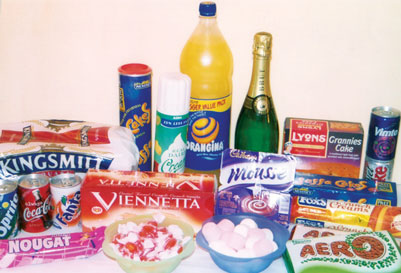Confectionery: Creating food structure out of thin air!
- Like
- Digg
- Del
- Tumblr
- VKontakte
- Buffer
- Love This
- Odnoklassniki
- Meneame
- Blogger
- Amazon
- Yahoo Mail
- Gmail
- AOL
- Newsvine
- HackerNews
- Evernote
- MySpace
- Mail.ru
- Viadeo
- Line
- Comments
- Yummly
- SMS
- Viber
- Telegram
- Subscribe
- Skype
- Facebook Messenger
- Kakao
- LiveJournal
- Yammer
- Edgar
- Fintel
- Mix
- Instapaper
- Copy Link
Posted: 2 January 2014 | K. Niranjan, University of Reading | 1 comment
Bubbles are always perceived to represent the best in food and drink. Their presence and characteristics have dominated our perception of the quality of traditional products such as bread, champagne, ice creams and let’s not forget the good olde beers! In recent years, there has been a constant flow of new bubble-containing snack foods into our supermarkets; whipped cream, chocolate, wafers, cakes, meringues, extruded snacks and sparkling drinks, all of which have very novel structures and mouth-feels (Figure 1). Some products are perceived to offer lighter alternatives in terms of calories. Most products manage to gain a positive market image by highlighting bubbles, because bubbles tend to be associated with celebration and luxury.


Figure 1: A selection of commercially available bubble containing products
Incorporating bubbles can be challenging in any food system, simply because gas is three orders of magnitude less dense than the food matrix into which it is added, and inevitably, the dispersion is unstable. It is even more challenging to create the right bubble-containing structure that will give the product the mouth-feel that its consumer desires. In addition to the food matrix, a bubble containing structure is typically characterised firstly by the fractional volume of the product occupied by bubbles and secondly, the bubble size distribution. Thus, ingredient formulation as well as the processing technique employed have to work in tandem in order to result in a product that is desirable and stable over its shelf life. In terms of product formulation, it is imperative to have agents in the ingredient mix which exhibit what is commonly known as gas-liquid interfacial activity. Such agents normally hold the bubbles within the matrix and stabilise the dispersion by lowering interfacial energy. In practice, however, a number of components in a product formulation will possess interfacial activity, and it can be extremely complex to analyse which component or components have succeeded in migrating to the interface and in what proportions.
Techniques such as confocal laser scanning microscopy are only just being applied to unravel such phenomena. The technology employed to incorporate bubbles into food systems is also equally important, if not more. A variety of methods are used commercially, but the most common method involves admitting the food system at a temperature where it is predominantly in the fluid state, together with a gas (not necessarily air), into a mixing head maintained under a positive pressure and driven by an impeller. The dispersion formed is then drawn out and restored to atmospheric pressure, with the temperature adjusted to a value that is needed for further processing of the dispersion (Figure 2).
The rest of this article is restricted - login or subscribe free to access


Why subscribe? Join our growing community of thousands of industry professionals and gain access to:
- bi-monthly issues in print and/or digital format
- case studies, whitepapers, webinars and industry-leading content
- breaking news and features
- our extensive online archive of thousands of articles and years of past issues
- ...And it's all free!
Click here to Subscribe today Login here




It shall be interesting to read the article